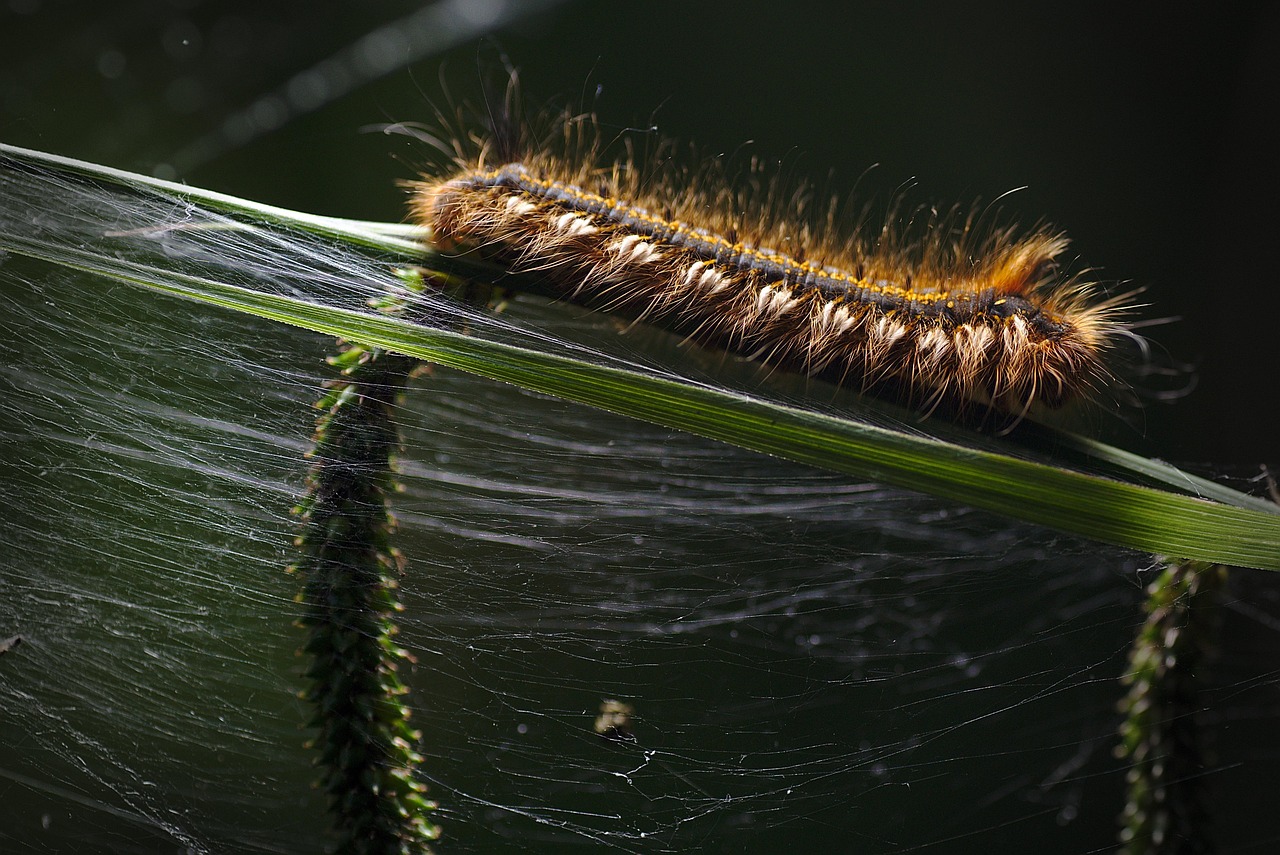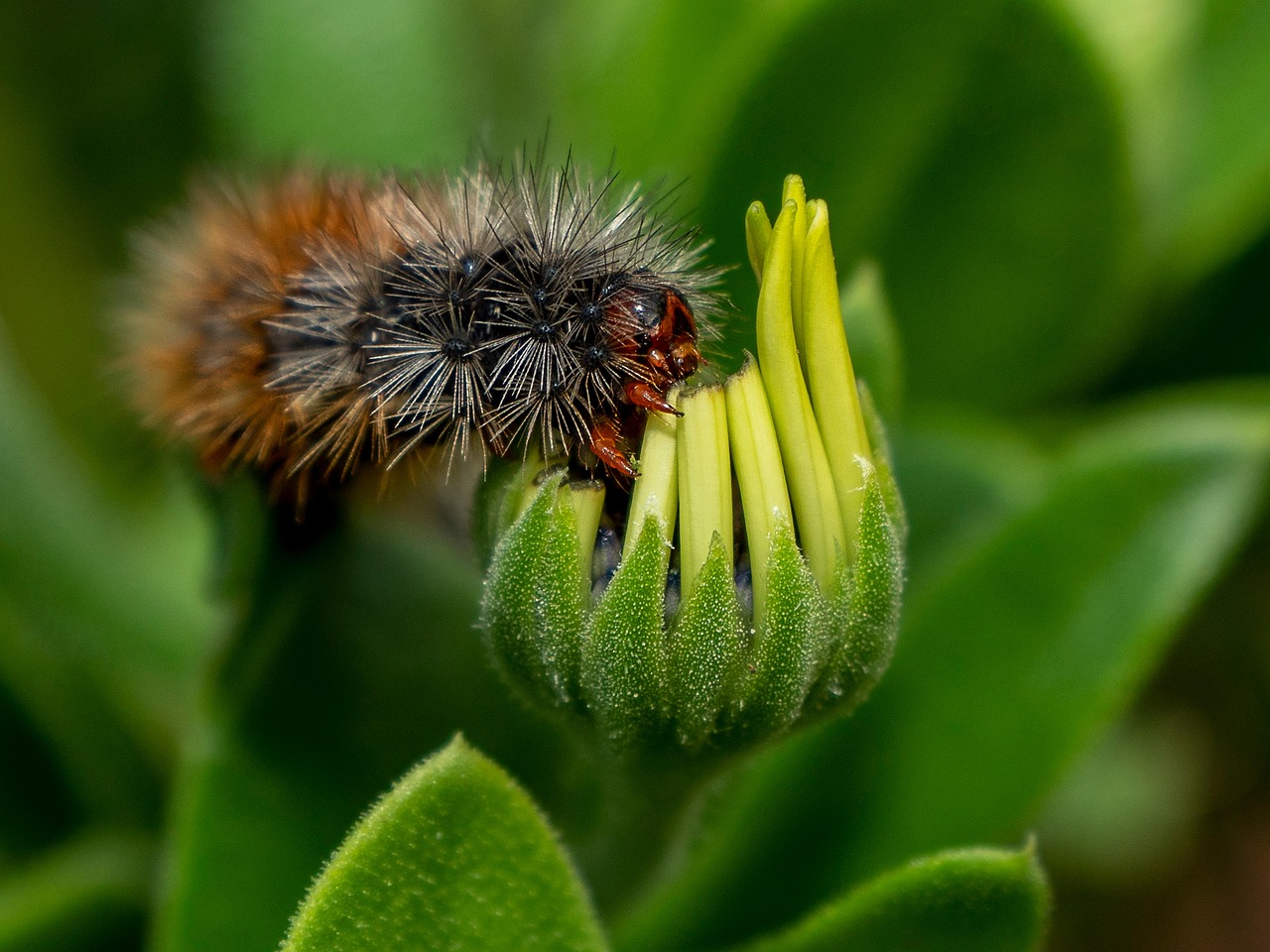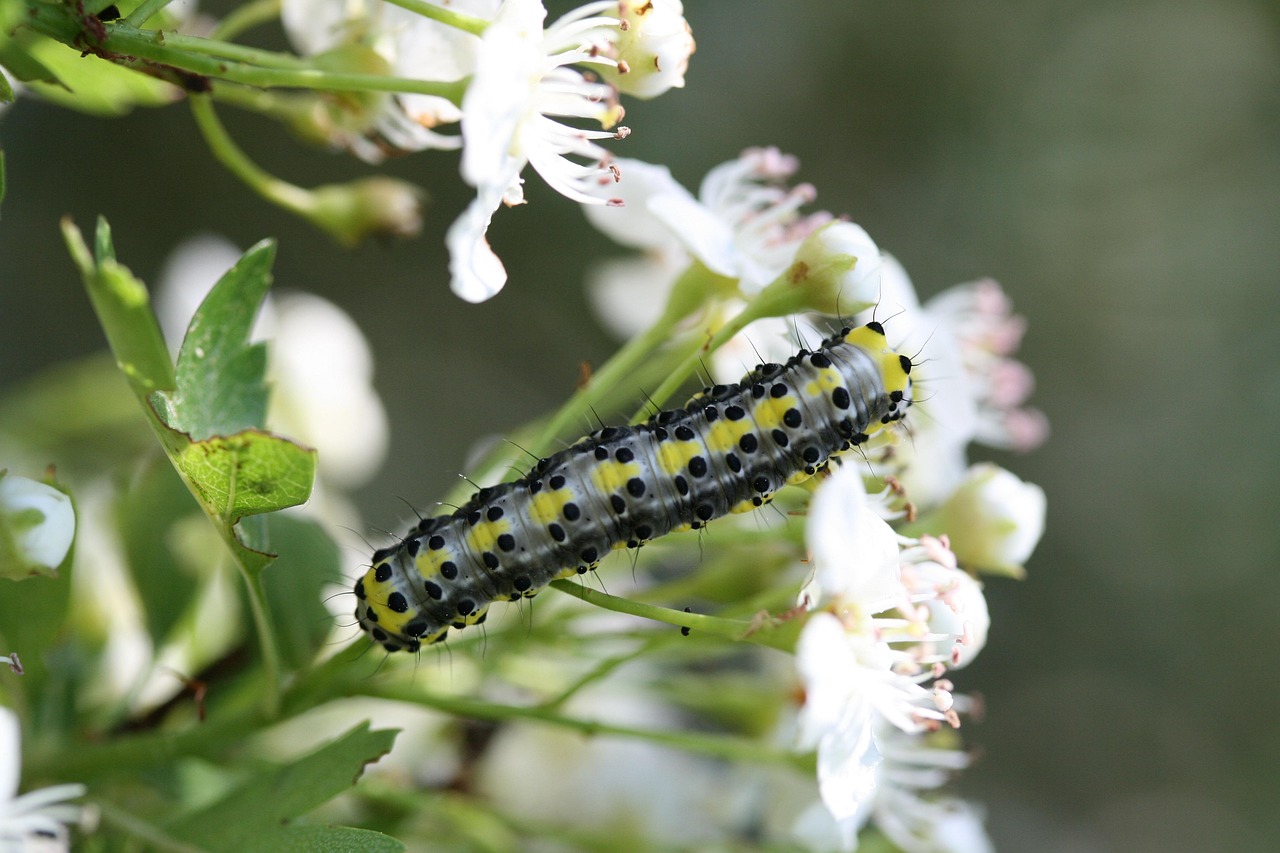Yellow caterpillars are often captivating due to their vibrant color. However, their allure may mask a more troublesome reality. Some yellow caterpillars can be pests, causing considerable harm to plants and crops. Understanding their nature is essential in determining whether they are beautiful creatures or hidden threats.
Caterpillars belong to the larval stage of moths and butterflies. They go through various transformations, eventually emerging as adult insects. The bright coloration of many caterpillars serves a dual purpose: it attracts potential predators and can also indicate toxicity. Yellow caterpillars, in particular, are a fascinating study in contrasts. While some are harmless or even beneficial, others can wreak havoc on gardens and agricultural lands.

When examining yellow caterpillars, it is important to recognize the diversity among species. Some are known for their striking appearance and harmless nature, while others have developed a reputation as pests. The following table outlines several notable yellow caterpillar species, highlighting their appearances and behaviors.
| Species | Appearance | Behavior | Pest Status |
|---|---|---|---|
| Spilosoma virginica | Bright yellow with black spots | Feeds on milkweed and other plants | Potential pest |
| Papilio machaon | Yellow with black bands | Feeds on various herbs; harmless | Not a pest |
| Automeris io | Vibrant yellow with hairy texture | Camo strategy; blends with foliage | Not a pest |
| Hyalophora cecropia | Yellow with blue tubercles | Feeds on trees; beneficial | Not a pest |
The table illustrates the diversity of yellow caterpillars. Some species are recognized as beneficial insects in ecosystems, while others are notorious for damaging crops and ornamental plants. For instance, Spilosoma virginica can become problematic in gardens, particularly when feeding on desirable flora.
Understanding the ecological role of yellow caterpillars is critical. Many caterpillars serve as food for various birds and other wildlife. This position in the food chain underscores the importance of these larvae in maintaining balanced ecosystems. However, their presence must be monitored to prevent overpopulation, which could lead to significant agricultural damage.
The Dual Nature of Yellow Caterpillars
The dual nature of yellow caterpillars—being both beautiful and potentially harmful—raises questions about their management in gardens and farms. Home gardeners often face dilemmas when encountering these insects. Should they be eradicated or tolerated? The answer may depend on several factors, including the specific species and the extent of the infestation.
Many gardeners prefer natural pest control methods. These methods can include attracting beneficial insects such as ladybugs or parasitic wasps that prey on harmful caterpillars. Understanding the life cycles of these insects helps gardeners make informed decisions about how to handle yellow caterpillars when they appear.
Another approach is to use physical barriers like row covers or nets. These can prevent caterpillars from accessing vulnerable plants without resorting to chemical pesticides. Such strategies align with sustainable gardening practices and promote a healthier ecosystem.
In summary, yellow caterpillars embody both beauty and potential menace in the natural world. By understanding their characteristics and behaviors, individuals can make educated choices about managing these fascinating creatures in their environments.
Identifying Yellow Caterpillars
Recognizing different species of yellow caterpillars is crucial for effective management. Identification can prevent misjudging harmless caterpillars as pests. Many yellow caterpillars share similar colors but can vary significantly in size, shape, and markings.
Key Characteristics to Observe
When identifying yellow caterpillars, consider the following characteristics:
- Color Variations: Some may be bright yellow, while others can be more muted or have stripes.
- Body Shape: The thickness and length can vary; some are slender while others are more robust.
- Hairiness: Some caterpillars have bristles or hairs, which can indicate toxicity.
- Markings: Spots, stripes, or other distinct patterns can help differentiate species.
- Behavior: Observe how they move; some may curl up when disturbed, while others may remain still.
Common Yellow Caterpillar Species
Several yellow caterpillar species are frequently encountered. Here are a few common ones you may come across:
- Common Yellow Swallowtail Caterpillar (Papilio machaon): This species is known for its striking yellow and black bands and can be found on various herbaceous plants.
- Cabbage Looper (Trichoplusia ni): A notable pest in gardens, these caterpillars are pale green to yellow and can cause significant damage to cabbage and other crops.
- Yellow Woolly Bear (Spilosoma virginica): This fuzzy caterpillar is often seen in late summer and is known for its bright yellow color with black spots.
- Hyalophora cecropia: This large caterpillar is recognizable by its yellow tubercles and feeds primarily on trees.
The Role of Yellow Caterpillars in Ecosystems

Yellow caterpillars play a significant role in their ecosystems. They contribute to the food web and serve various functions that promote biodiversity.
Food Source for Wildlife
Caterpillars are a vital food source for many animals, including birds, mammals, and other insects. Their presence supports numerous species and contributes to maintaining ecological balance.
Pollination and Plant Health
Some yellow caterpillars, when they become butterflies or moths, play a crucial role in pollination. This process is essential for the reproduction of many flowering plants. Additionally, healthy plant populations can improve the overall health of an ecosystem.
Cultural Significance of Yellow Caterpillars

The vibrant hues of yellow caterpillars have also made them significant in various cultures. They often symbolize transformation and renewal due to their metamorphosis into butterflies or moths.
Symbolism in Literature and Art
In literature, yellow caterpillars may represent change or the passage of time. Artists often depict them to convey beauty and fragility, highlighting their striking appearance against natural backdrops.

Cultural Associations
Many cultures view butterflies as symbols of hope and rebirth. Consequently, the caterpillars that eventually transform into these beautiful creatures also gain symbolic importance. Some traditions celebrate these transformations during festivals or rituals, emphasizing their connection to nature’s cycles.
The multifaceted nature of yellow caterpillars—from their ecological roles to their cultural significance—illustrates the complexity of these seemingly simple organisms. Their impact extends beyond gardens and farms, reaching into ecosystems and human culture alike.
Managing Yellow Caterpillar Populations
As yellow caterpillars can be both beautiful and potentially harmful, managing their populations effectively is essential for gardeners and farmers. Understanding different management techniques helps in preserving beneficial species while controlling those that are pests.
Monitoring Caterpillar Activity
Effective management starts with monitoring caterpillar activity. This involves regular inspections of plants to identify caterpillars early in their life cycle. Here are some methods to monitor their presence:
- Visual Inspections: Regularly check the undersides of leaves and stems where caterpillars often hide.
- Sticky Traps: Place sticky traps near plants to capture adult moths, which can provide insight into caterpillar populations.
- Plant Health Assessment: Monitor plant health for signs of damage, which may indicate a caterpillar infestation.
Natural Pest Control Methods
Implementing natural pest control methods is often preferred because they are environmentally friendly and promote a healthier ecosystem. Some effective strategies include:
- Encouraging Beneficial Insects: Introduce or attract predators such as birds, ladybugs, and lacewings that feed on caterpillars.
- Using Biological Control Agents: Employ natural enemies like parasitic wasps that target specific caterpillar species.
- Companion Planting: Plant specific plants that repel caterpillars or attract their natural predators.
Chemical Control Options
In cases of severe infestations, chemical control options may be necessary. However, these should be used judiciously to minimize harm to beneficial insects and the environment.
Selecting Pesticides
When selecting pesticides, consider the following criteria:
- Target Specificity: Choose pesticides that specifically target caterpillars without affecting other beneficial insects.
- Application Timing: Apply pesticides when caterpillars are most vulnerable, typically during their early instar stages.
- Environmental Impact: Opt for products with minimal residual effects on the environment.
Application Techniques
Proper application techniques can enhance the effectiveness of chemical controls:
- Aerial Spraying: Useful for large areas but requires careful planning to minimize drift.
- Ground Spraying: More precise application directly to affected plants. Ensure even coverage on foliage.
- Drenching: Apply liquid pesticides at the base of plants for soil-borne caterpillar targets.
Preventive Measures for Yellow Caterpillars
Preventive measures are crucial for reducing the chances of caterpillar infestations. Implementing these strategies can minimize the need for reactive measures later on.
Garden Maintenance Practices
Good garden maintenance practices can deter caterpillar populations:
- Regular Weeding: Remove weeds that may harbor caterpillars or attract adult moths.
- Crop Rotation: Change the location of specific crops each season to disrupt the life cycle of pests.
- Healthy Soil Management: Maintain soil health through composting and organic matter incorporation, promoting strong plant growth.
Educational Outreach
Educating oneself and others about the ecological roles of yellow caterpillars can foster a more balanced approach to pest management. Sharing knowledge on identifying beneficial species versus harmful ones can empower gardeners and farmers to make informed decisions.
By understanding yellow caterpillars and employing effective management strategies, it is possible to enjoy their beauty while minimizing their potential as pests. This approach promotes sustainable gardening and agriculture practices that benefit both the ecosystem and human interests.
Further Insights on Yellow Caterpillars
Exploring the multifaceted role of yellow caterpillars in ecosystems reveals a complex relationship between these creatures and their environments. Beyond their striking appearance, they contribute significantly to biodiversity while also posing challenges for agricultural practices. Understanding their life cycles can aid in predicting population surges and managing their impact effectively.
The Importance of Biodiversity
Biodiversity is vital for healthy ecosystems, and yellow caterpillars play a part in this balance. They serve as food sources for various animals, supporting predator populations such as birds and small mammals. Conversely, their presence can indicate the health of vegetation and the overall ecosystem. By promoting a diverse environment, gardeners can create habitats that support both beneficial insects and plants.
Encouraging Public Awareness
Raising awareness about yellow caterpillars can help communities better understand their ecological roles. Educational programs can encourage people to appreciate these creatures rather than view them solely as pests. Workshops, community gardens, and school projects can serve as platforms for sharing knowledge about identifying beneficial species and understanding their contributions to nature.
Research and Conservation Efforts
Ongoing research into the lives of yellow caterpillars can provide insights into how to manage them sustainably. Conservation efforts focusing on habitat preservation can help maintain healthy caterpillar populations. Protecting native plants that serve as host plants for butterflies and moths is crucial, as these plants are integral to the caterpillars’ life cycles.
Conclusion
Yellow caterpillars embody a fascinating blend of beauty and complexity. Their vibrant colors draw attention, yet their potential to cause harm cannot be overlooked. Through effective management strategies, it is possible to celebrate their role in ecosystems while keeping plant health in check.
Understanding the importance of yellow caterpillars in nature encourages a more thoughtful approach to gardening and agriculture. By employing integrated pest management techniques and fostering biodiversity, we can enjoy the beauty of these creatures while minimizing their impact as pests.
Ultimately, the relationship between humans and yellow caterpillars offers valuable lessons about coexistence with nature. By recognizing their ecological roles and understanding the benefits they provide, we can engage in responsible practices that honor both the beauty of these insects and the health of our environments.
